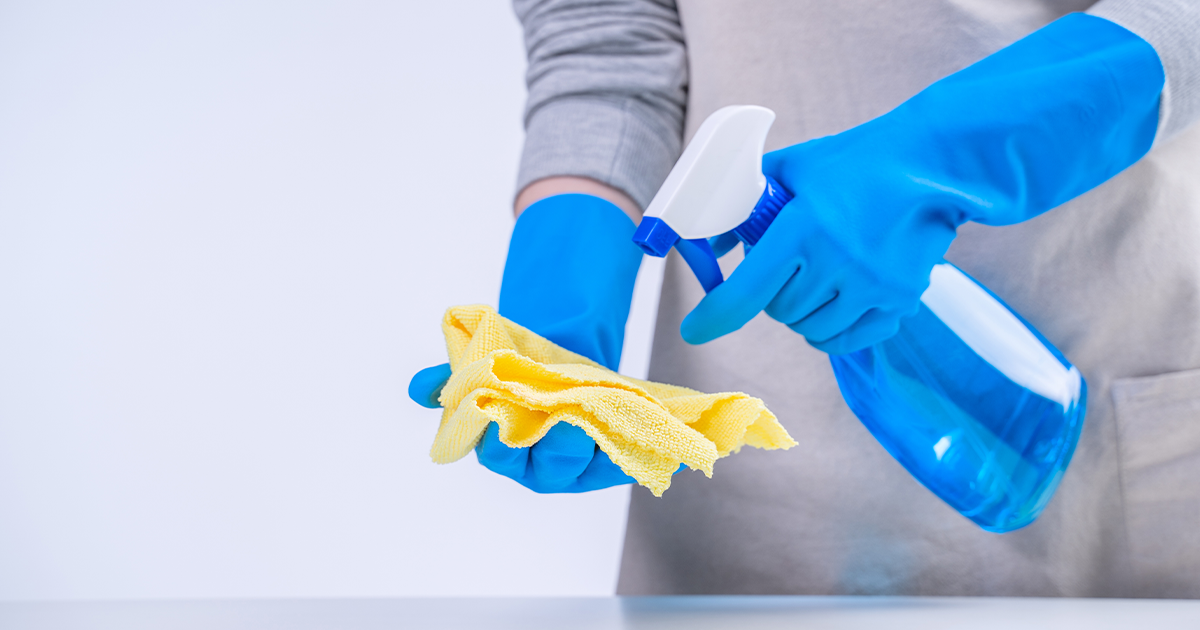A printer is one of the most frequently shared office devices, especially if your “printer” is actually a multifunction device capable of printing, scanning and copying. The more your device does, the more important it is to maintain its cleanliness.
If your printers are part of a Managed Print Service agreement, your technicians likely clean your devices during routine service or preventative printer maintenance visits. But do printers need to be cleaned? Yes. Cleaning printers can help prolong their life and reduce paper jams, smeared print on documents and downtime.
You may want to clean a printer yourself if you don’t have a service agreement. If that’s the case, be sure to check with the manufacturer’s warranty and documentation for your printer model to make sure you’re doing it properly.
In this article, we’ll share some general tips for how to manually clean printer, copier and multifunction device screens and operation panels. Plus, we’ll share how to clean inside a printer, too.
RELATED ARTICLE: 10 Printer Problems You Can Fix Yourself
Cleaning the Outside of Your Printer
The Dos
- Make sure the device is powered down and unplugged before cleaning.
- Use appropriate cleaning agents. Our technicians use Isopropyl Alcohol to gently wipe down machines. Most anti-bacterial wipes are acceptable when cleaning your machine, including the touch screen, but check to make sure that alcohol is the only ingredient.
- Spray the cleaning agent onto a lint-free cloth/rag and then wipe surfaces.
- Cloths/rags should be disposed of after one use.
- Only use glass cleaner on the plate glass surface and wipe with a lint free cloth.
- Wait until surfaces are dry before plugging the device back in.
The Don’ts
- Don’t use common cleaning products that contain bleach, ammonia or other harsh cleaning solvents. Disinfecting and cleaning a printer with common cleaning products can discolor the surface of touchscreens and damage a printer, copier or multifunction device.
- Avoid using wet wipes and other consumer products that contain ingredients other than alcohol which can damage machines.
- Don’t spray cleaning agents directly on the device’s screen, surfaces or components, as getting liquid inside the device could damage the internal components.
- In general, when cleaning electronics, never use an extremely damp cloth or disinfectant wipe to clean the device. If you have a very damp wipe it may need to be squeezed to remove some of the excess liquid before use so nothing drips or leaks into the machine.
- Don't allow any liquid to sit or pool on the area being disinfected for more than a few seconds.
- Never use rough paper towels or cloths to dry the glass or screens of your devices, which can cause scratches to the surface.
Should I Clean the Inside of a Printer?
The interior of multifunction devices contain sensitive electronics and delicate components, so it’s best to avoid probing inside. When possible, leave this task to the pros so you don’t end up scratching the drum or breaking something, leading to costly repairs and poor print quality.
However, there are some general items you can clean. Some printer models have a cleaning cycle mode. Look for this option on your control panel or look it up in your manual to run the cleaning function.
If the paper drawers are easily removed from the unit, take them out and clean them with a damp cloth to remove any dust or paper lint. Never force a drawer that isn’t easily removed. Make sure they are completely dry before placing them back in place.
You may also want to clean the paper rollers (the rubber rollers that pick up the paper). Use isopropyl alcohol on a lint-free cloth. This small cleaning job can help prevent paper jams.
Another task that you may need to perform is replacing the waste toner container. This is a small compartment that catches excess ink. If it’s nearing capacity, a warning message typically appears on the control panel display. Locate the waste toner box and replace it with an authorized unit.
Dispose of the used waste toner box according to local ordinances or contact an authorized dealer to inquire about disposal. They might also offer toner and ink cartridge recycling.
Remove the toner cartridge and gently wipe to remove any dust or toner underneath with a dry cloth. If you notice excess toner inside the print device, it may be possible to remove it using a vacuum that is specifically designed to capture fine dust particles like toner powder. These vacuums can be costly, however.
Whatever you do, don’t use a traditional vacuum with a hose attachment; they can’t filter the toner dust properly and you will end up with a big mess on your hands (and everywhere else). Plus, they’re usually too large and can damage components.
Excess toner dust inside a machine may indicate a defective cartridge. This stresses the importance of using only reputable toner providers. Many aftermarket toner cartridges are of lesser quality and may be prone to leaking.
RELATED ARTICLE: How to Avoid Toner Pirate Scams
Also avoid using compressed air. The spray may contain moisture, and the high pressure may force dust particles or paper lint into crevices and components where it becomes lodged and can wreak havoc.
When it comes to cleaning or servicing your printer, copier or multifunction device, it’s best to seek the help of Gordon Flesch Company’s professional service technicians. They help organizations of all sizes maintain their printer fleets, whether a single device or dozens of machines.
Cleaning and repairs are just one item to check off the list when auditing your print environment to determine if working with a Managed Print Services provider would be cost effective and beneficial. Download our Office Printer Checklist below for additional considerations.
Then, discover the benefits of our imageCARE+ service and support program for your organization when you schedule a free print assessment. Contact us today.











